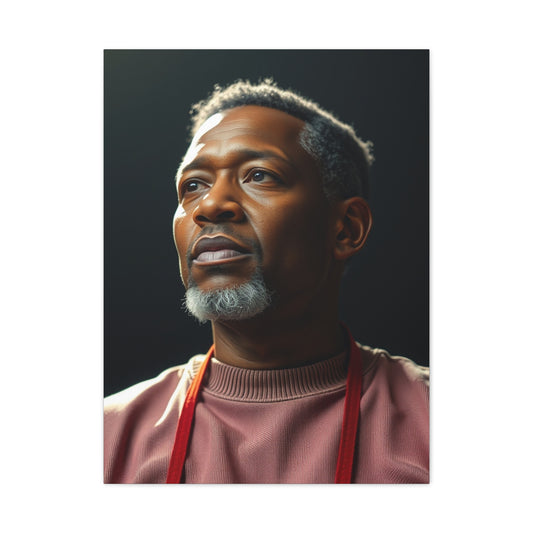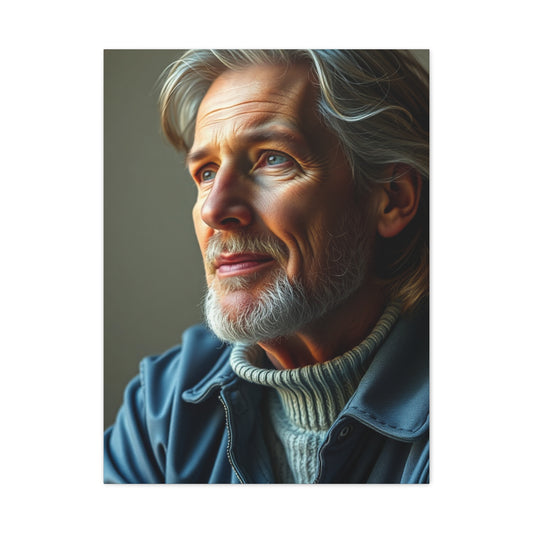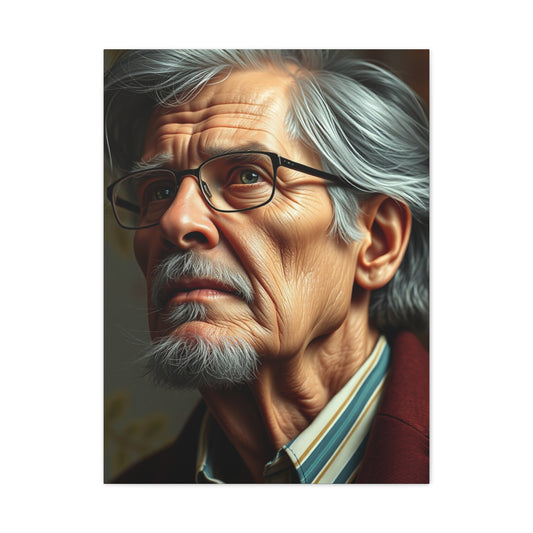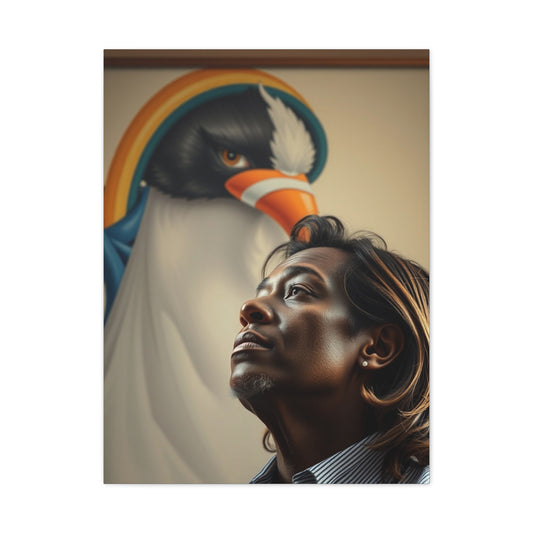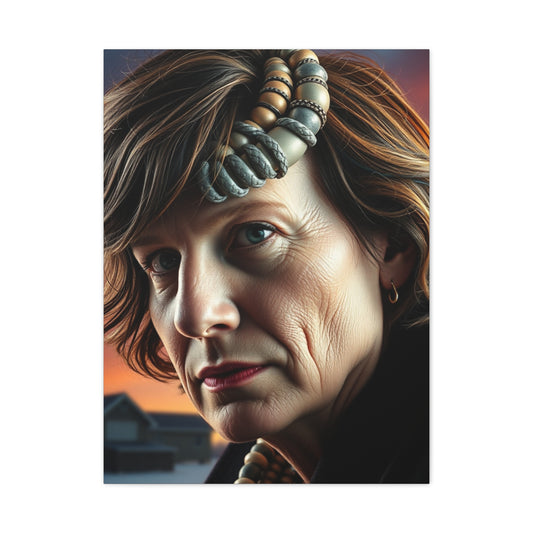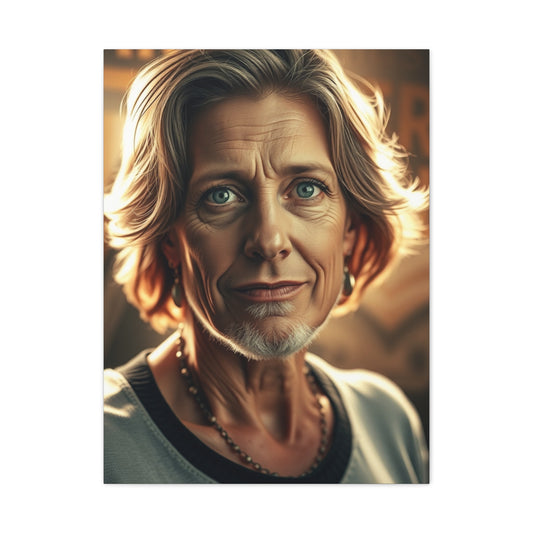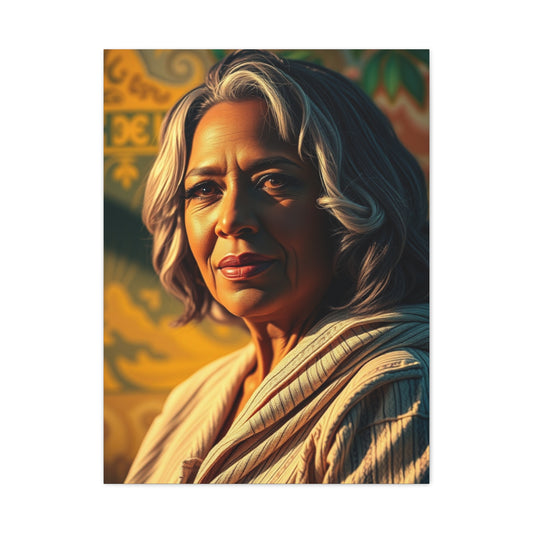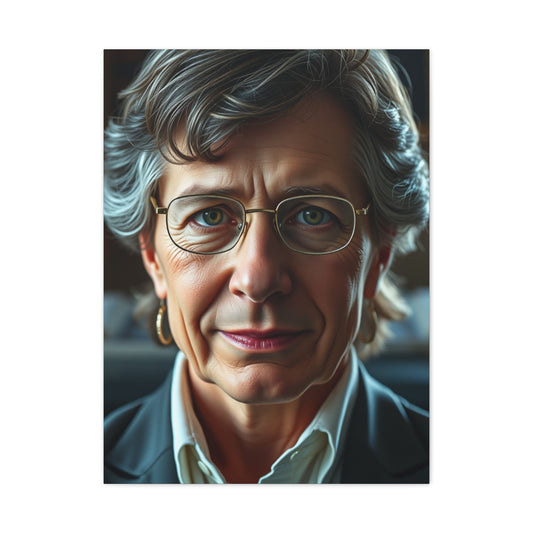Kimble Warren’s Wall Art: Redefining Contemporary Home Décor
Kimble Warren has emerged as a distinctive voice in the contemporary canvas art scene, creating pieces that transcend traditional boundaries between abstract expression and modern aesthetic sensibilities. His work represents a sophisticated understanding of how visual elements can transform living spaces while maintaining artistic integrity that speaks to both casual observers and serious collectors.
The distinctive approach Warren employs in his canvas prints demonstrates a mastery of color theory, compositional balance, and spatial dynamics that sets his work apart in an increasingly crowded marketplace of modern wall décor. Each piece reflects a careful consideration of how abstract forms can communicate emotional resonance while serving the practical function of enhancing interior environments.
Warren's artistic philosophy centers on the belief that abstract expression should be accessible without compromising sophistication. This principle manifests in canvas prints that maintain visual complexity while remaining approachable to diverse audiences. The result is a body of work that functions equally well in residential settings, commercial spaces, and gallery environments.
The evolution of Warren's artistic style demonstrates a continuous exploration of how geometric forms, organic shapes, and dynamic color relationships can create compelling visual narratives. His canvas prints often feature layered compositions that reveal new details upon closer examination, rewarding viewers who take time to engage with the work on multiple levels.
Contemporary interior design increasingly values artwork that can serve as both decorative elements and conversation starters. Warren's abstract canvas prints fulfill this dual function by presenting visually striking compositions that invite interpretation and discussion while enhancing the overall aesthetic coherence of a space.
Kimble Warren Abstract Canvas Print Collections
Warren's portfolio encompasses several distinct series, each exploring different aspects of abstract expression while maintaining his signature aesthetic approach. The geometric series features bold, angular forms that create dynamic tension within carefully balanced compositions. These prints demonstrate how mathematical precision can coexist with emotional expression, resulting in pieces that feel both structured and spontaneous.
The organic series represents Warren's exploration of more fluid, naturalistic forms that echo patterns found in the natural world. These canvas prints often feature flowing lines, curved shapes, and gradual color transitions that create a sense of movement and growth. The interplay between organic and geometric elements in some pieces creates visual dialogue that adds depth to the overall composition.
Color exploration forms a central component of Warren's artistic practice, with different series focusing on specific chromatic relationships and emotional associations. The monochromatic series demonstrates how subtle variations in tone and texture can create sophisticated visual interest without relying on bold color contrasts. These prints prove particularly effective in spaces where understated elegance is desired.
The vibrant series showcases Warren's ability to work with intense color palettes while maintaining compositional harmony. These canvas prints feature bold hues that energize spaces while avoiding the visual chaos that can result from poorly managed color relationships. The careful modulation of saturation and value ensures that even the most dynamic pieces remain visually coherent.
Mixed media exploration has led to canvas prints that incorporate various textural elements and surface treatments. These pieces demonstrate how traditional painting methods can be adapted for contemporary reproduction while maintaining the tactile qualities that make original artwork compelling.
Scale and Proportion in Modern Wall Art Display
The relationship between artwork size and spatial context plays a crucial role in determining the visual impact of abstract canvas prints. Warren's understanding of these dynamics influences both the creation of his original works and the sizing options available for his reproduced pieces. Large-format prints can serve as commanding focal points that anchor entire room compositions, while smaller pieces work effectively as part of grouped arrangements.
Scale considerations extend beyond simple proportional relationships to encompass viewing distance, ceiling height, and surrounding furnishings. A canvas print that appears perfectly sized when viewed alone may feel overwhelming or insignificant when placed within its intended environment. Warren's experience with various installation contexts informs his approach to creating works that function effectively across different scales.
The psychological impact of scale cannot be overlooked when selecting modern wall art. Large abstract canvas prints can create a sense of grandeur and importance that elevates the perceived value of a space. Conversely, smaller pieces can establish intimate viewing experiences that encourage close examination and personal connection with the artwork.
Proportion extends beyond the artwork itself to encompass the relationship between positive and negative space within the composition. Warren's canvas prints often demonstrate sophisticated understanding of how empty areas can be as important as filled spaces in creating visual balance and directing viewer attention.
Multi-panel installations offer another approach to scale manipulation, allowing large visual impact while maintaining flexibility in arrangement and installation. Warren's series designed for multi-panel display demonstrate how individual elements can work together to create cohesive larger compositions while retaining individual visual integrity.
Abstract Expression
Warren's manipulation of color relationships demonstrates deep understanding of how chromatic choices influence emotional response and spatial perception. His canvas prints employ color theory principles in service of creating specific moods and atmospheres that enhance the intended function of different spaces.
Warm color palettes featuring reds, oranges, and yellows create energetic, welcoming environments that encourage social interaction and active engagement. Warren's warm-toned canvas prints often incorporate subtle cool accents that prevent the overall composition from becoming visually overwhelming while maintaining the desired emotional impact.
Cool color schemes utilizing blues, greens, and purples establish calming, contemplative atmospheres conducive to relaxation and focused work. These canvas prints demonstrate how cooler hues can create sense of spaciousness and tranquility without resulting in sterile or unwelcoming environments.
Neutral palettes represent another significant category in Warren's work, employing sophisticated relationships between whites, grays, blacks, and earth tones. These canvas prints prove that limited color ranges need not result in visually boring compositions, instead demonstrating how subtle variations can create compelling visual interest.
The psychological associations of different colors influence how viewers respond to abstract canvas prints on both conscious and subconscious levels. Warren's awareness of these associations informs his color choices while avoiding overly literal or clichéd implementations that might limit the interpretive possibilities of his work.
Seasonal color relationships provide another layer of consideration in Warren's practice. Canvas prints designed with spring palettes might emphasize fresh greens and soft pastels, while autumn-inspired pieces could feature rich oranges, deep reds, and golden yellows that echo the natural cycles of the year.
Contemporary Interior Design
The successful integration of abstract canvas prints into contemporary interior design requires careful consideration of existing color schemes, furniture styles, and spatial arrangements. Warren's work demonstrates awareness of these considerations, resulting in pieces that can enhance rather than compete with their surrounding environments.
Minimalist interior approaches often benefit from carefully selected abstract canvas prints that add visual interest without disrupting the clean, uncluttered aesthetic that defines this design philosophy. Warren's more restrained compositions prove particularly effective in these contexts, providing focal points that respect the overall design intention.
Maximalist spaces present different opportunities and challenges for artwork integration. In these environments, abstract canvas prints must hold their own among diverse visual elements while contributing to rather than detracting from the overall compositional richness. Warren's more dynamic pieces often thrive in these settings.
Commercial space considerations introduce additional factors such as durability, maintenance requirements, and broad appeal across diverse viewer populations. Canvas prints designed for office environments must balance visual interest with professional appropriateness, while pieces intended for hospitality settings might prioritize creating welcoming, comfortable atmospheres.
Residential applications allow for more personal expression and specific lifestyle considerations. Warren's canvas prints for bedroom environments often emphasize calming, restful qualities, while pieces intended for living areas might focus on creating conversation and visual engagement.
The growing popularity of gallery walls and curated art collections has influenced how individual canvas prints are conceived and produced. Warren's awareness of how his pieces might function as part of larger arrangements influences both compositional choices and sizing options.
Material Quality and Production Standards in Canvas Print Manufacturing
The technical aspects of canvas print production significantly influence the final quality and longevity of abstract artwork reproductions. Warren's collaboration with printing facilities ensures that his original works are faithfully translated into durable, archival-quality prints that maintain their visual impact over extended periods.
Canvas substrate selection affects both the visual appearance and physical durability of finished prints. Different weave patterns, fiber compositions, and surface treatments create subtle variations in how colors appear and how light interacts with the printed surface. Warren's specifications for his canvas prints reflect careful consideration of these technical factors.
Ink quality and printing methods determine color accuracy, fade resistance, and overall print longevity. Professional-grade pigment inks used in Warren's canvas print production ensure that colors remain vibrant and true to the original artwork even after years of display in various lighting conditions.
Stretching and mounting processes influence the final presentation and installation characteristics of canvas prints. Proper tensioning ensures smooth, wrinkle-free surfaces while appropriate mounting systems provide secure, level installation that maintains the artwork's intended appearance.
Protective coatings and finishing treatments can enhance durability while affecting surface texture and light reflection characteristics. Warren's canvas prints utilize coatings that protect against UV damage and environmental contaminants while preserving the visual qualities of the original artwork.
Quality control procedures ensure consistent reproduction standards across different print runs and sizing options. This consistency allows collectors to acquire multiple pieces with confidence that color matching and production quality will remain uniform throughout their collection.
Abstract Art in Contemporary Home Decoration
Abstract art has undergone significant transformation in its role within contemporary home decoration, evolving from a specialized interest of art collectors to a mainstream design element embraced by diverse homeowner populations. This evolution reflects changing attitudes toward artistic expression and its place in everyday living environments.
Historical resistance to abstract art in domestic settings often stemmed from perception that such work was too challenging or intellectual for comfortable living spaces. Contemporary attitudes have shifted toward appreciation for how abstract compositions can enhance rather than dominate interior environments.
The democratization of art reproduction through high-quality printing methods has made sophisticated abstract artwork accessible to broader audiences. Warren's canvas prints exemplify how this accessibility can be achieved without compromising artistic integrity or visual impact.
Changing lifestyle patterns influence how people interact with their living spaces and the role of artwork within those spaces. Increased time spent at home has heightened awareness of how visual environments affect mood, productivity, and overall well-being.
Social media influence has contributed to growing appreciation for visually striking interior design elements that photograph well and reflect personal taste and cultural awareness. Abstract canvas prints serve this function while providing lasting visual interest beyond their social media appeal.
The integration of abstract art into mainstream interior design reflects broader cultural shifts toward appreciation for individual expression and rejection of overly prescriptive decorating rules. This freedom allows homeowners to select artwork based on personal response rather than adherence to traditional guidelines.
Geometric Patterns
Geometric patterns in abstract art create specific psychological responses that can significantly influence how people experience and interact with their living spaces. Warren's geometric canvas prints demonstrate sophisticated understanding of how angular forms, repeated patterns, and mathematical relationships affect human perception and emotional state.
Symmetrical compositions often create feelings of stability, order, and calm that prove particularly beneficial in spaces designated for rest and relaxation. Warren's symmetrical canvas prints employ this principle while introducing enough variation to prevent visual monotony or excessive rigidity.
Asymmetrical arrangements can generate dynamic energy and visual interest that stimulates engagement and creativity. These compositions prove effective in work spaces or social areas where active mental engagement is desired. Warren's asymmetrical pieces balance visual excitement with compositional coherence.
Repetitive geometric patterns can create meditative qualities that promote focus and concentration. Canvas prints featuring subtle pattern repetitions work effectively in study areas or meditation spaces where mental clarity is prioritized.
The psychological associations of specific geometric forms influence viewer response to abstract compositions. Circular forms often suggest completeness, unity, and harmony, while angular shapes may convey strength, direction, and determination. Warren's work demonstrates awareness of these associations while avoiding overly literal implementations.
Scale variations within geometric compositions create visual hierarchy and depth that add complexity to otherwise simple forms. This approach allows geometric canvas prints to maintain viewer interest over extended periods while supporting various interpretive possibilities.
Atmosphere Creation Through Wall Art
Color psychology plays a fundamental role in determining how abstract canvas prints influence the emotional atmosphere of interior spaces. Warren's sophisticated use of color relationships demonstrates understanding of how different hues, saturations, and values can be orchestrated to create specific psychological effects.
Red-dominant compositions typically generate feelings of energy, passion, and warmth that can enhance social spaces and dining areas. However, excessive use of intense reds may create overstimulation, requiring careful balance with cooler or neutral tones. Warren's red-featured canvas prints demonstrate how this powerful color can be incorporated effectively.
Blue-based palettes often promote feelings of calm, trust, and contemplation that prove beneficial in bedrooms, bathrooms, and study areas. Different shades of blue create varying effects, from the energizing qualities of bright turquoise to the serene influence of deep navy. Warren's blue compositions explore these nuanced relationships.
Green hues connect viewers with natural environments and often promote feelings of growth, balance, and renewal. Canvas prints featuring green as a primary or accent color can bring organic feeling to interior spaces while supporting overall well-being. Warren's green-integrated pieces demonstrate various approaches to incorporating this versatile color.
Yellow and orange tones introduce brightness and optimism that can counteract the depressing effects of limited natural light in certain spaces. These warm colors require careful handling to avoid creating overwhelming or garish effects. Warren's warm-toned canvas prints show how these energetic colors can be used effectively.
Purple and violet shades often convey creativity, spirituality, and luxury that can enhance spaces designated for artistic or contemplative activities. The rarity of purple in natural environments makes it particularly effective for creating distinctive, memorable visual impact.
Neutral color schemes utilizing various grays, beiges, and whites provide sophisticated backgrounds that allow other design elements to shine while contributing their own subtle visual interest. Warren's neutral canvas prints prove that limited color palettes can produce remarkably compelling compositions.
Visual Harmony in Modern Abstract Prints
Achieving compositional balance in abstract canvas prints requires sophisticated understanding of how visual weight, directional forces, and spatial relationships create overall harmony or tension within the picture plane. Warren's work demonstrates mastery of these principles while maintaining the spontaneous qualities that make abstract art compelling.
Symmetrical balance creates formal, stable compositions that often convey sense of permanence and reliability. This approach proves effective for spaces where calm, orderly atmosphere is desired. Warren's symmetrically balanced canvas prints demonstrate how formal balance can be achieved without sacrificing visual interest or artistic expression.
Asymmetrical balance requires more complex manipulation of visual elements to create stability through careful distribution of visual weight rather than mirror-image relationships. This approach often results in more dynamic, engaging compositions that maintain viewer interest over extended periods.
Radial balance organizes compositional elements around central focal points, creating sense of movement and energy that can enliven static wall surfaces. Warren's radially balanced canvas prints demonstrate how this organizational principle can create compelling visual experiences.
The concept of visual weight encompasses factors beyond simple size or color intensity, including texture, position, and relationship to other elements within the composition. Understanding these nuanced relationships allows for sophisticated manipulation of viewer attention and emotional response.
Directional forces within abstract compositions guide viewer eye movement and create sense of motion or stability. Warren's canvas prints often demonstrate masterful control of these forces, creating compositions that feel simultaneously dynamic and balanced.
Surface Quality in Canvas Print Production
Surface texture plays a crucial role in determining how abstract canvas prints interact with light and how viewers experience the artwork both visually and, in some cases, tactilely. Warren's attention to textural considerations ensures that his prints maintain visual interest and authenticity even when reproduced from original paintings.
Canvas weave patterns create subtle texture that affects how colors appear and how light reflects from the surface. Different weave densities and patterns can enhance or diminish certain visual effects, making substrate selection an important consideration in print production.
Printing techniques can simulate various surface textures found in original paintings, from smooth, flat applications to impasto-like raised areas that create shadow and highlight effects. Warren's canvas prints often incorporate these textural simulations to maintain connection with traditional painting methods.
Coating applications can modify surface characteristics while providing protection against environmental damage. Matte coatings reduce glare and create more subdued surface appearance, while gloss coatings enhance color saturation and create more reflective surfaces.
The interaction between texture and lighting conditions significantly influences how abstract canvas prints appear in different environments. Warren's work takes these considerations into account, ensuring that his pieces function effectively under various lighting scenarios.
Aging characteristics of different textures and coatings influence long-term appearance and maintenance requirements. Professional-quality canvas prints should maintain their intended appearance for decades when properly cared for and displayed in appropriate conditions.
Large Statement Wall Art Pieces
Proper installation of large abstract canvas prints requires careful planning and attention to structural requirements that extend beyond simple aesthetic placement. Warren's larger pieces demand installation approaches that ensure both security and optimal visual presentation.
Wall structure assessment becomes critical when dealing with substantial canvas prints that may weigh significantly more than typical wall decorations. Appropriate anchoring systems must be selected based on wall type, stud location, and total weight distribution requirements.
Height placement influences how viewers interact with large canvas prints and affects the overall visual balance of room compositions. Standard guidelines suggest hanging artwork with centers approximately 57-60 inches from floor level, but large pieces may require adjustments based on ceiling height and furniture arrangements.
Lighting considerations become more complex with large-format abstract canvas prints, as even lighting distribution across larger surfaces requires more sophisticated planning. Natural light sources, artificial lighting placement, and potential glare issues must all be evaluated during installation planning.
Spatial relationships between large canvas prints and surrounding furnishings require careful consideration to avoid overwhelming smaller objects or creating uncomfortable visual competition. The commanding presence of substantial artwork can positively or negatively affect the perceived scale of other room elements.
Multi-panel installations offer alternatives to single large pieces while maintaining impressive visual impact. Warren's multi-panel series demonstrate how related compositions can work together to create wall-spanning installations that remain flexible in arrangement and installation requirements.
Gallery Wall Arrangements with Abstract Canvas Prints
Gallery wall creation represents an increasingly popular approach to displaying multiple canvas prints in arrangements that create greater visual impact than individual pieces while allowing for personal curation and creative expression. Warren's work lends itself particularly well to gallery wall applications due to consistent quality and compatible aesthetic approaches across different pieces.
Planning gallery wall layouts requires consideration of spacing, visual balance, and thematic coherence that creates unified presentation rather than random collection. Successful arrangements often begin with anchor pieces that establish overall scale and color direction for surrounding works.
Template creation using paper cutouts or digital planning tools allows experimentation with different arrangement possibilities before committing to wall mounting. This approach prevents unnecessary wall damage while enabling exploration of various compositional options.
Frame selection and consistency contribute significantly to gallery wall success, with decisions about uniformity versus variety affecting overall visual coherence. Warren's canvas prints work effectively both with consistent framing approaches and with carefully planned frame variations that add visual interest.
Spacing considerations must balance visual separation with overall unity, ensuring that individual pieces maintain distinct identity while contributing to larger compositional success. Standard spacing guidelines provide starting points, but specific arrangements may require adjustments based on piece sizes and visual characteristics.
Lighting design for gallery walls must account for multiple pieces with potentially different reflective characteristics and viewing requirements. Even illumination across the entire arrangement prevents individual pieces from being favored or neglected due to lighting variations.
Minimalist Design Principles in Contemporary Canvas Art Selection
Minimalist design philosophy emphasizes reduction to essential elements while maintaining visual impact and functional effectiveness. Warren's minimalist canvas prints demonstrate how abstract art can embrace this philosophy while avoiding the coldness or sterility sometimes associated with extreme minimalism.
Negative space utilization becomes particularly important in minimalist compositions, where empty areas serve active roles in creating balance and directing attention. Warren's minimalist pieces often feature expansive areas of subtle color or texture that provide visual rest while maintaining engagement.
Limited color palettes challenge artists to create visual interest through subtle variations rather than bold contrasts. Warren's minimalist canvas prints demonstrate how sophisticated color relationships can emerge from apparently simple chromatic choices.
Essential form reduction requires identification of core visual elements that convey intended meaning or emotional impact. Warren's process of distillation results in compositions that maintain complexity while appearing deceptively simple.
The relationship between minimalism and sophistication requires careful navigation to avoid compositions that appear underdeveloped or lacking in artistic ambition. Warren's minimalist work demonstrates how reduction can enhance rather than diminish artistic impact.
Contemporary minimalism has evolved beyond strict adherence to reductive principles to embrace approaches that maintain minimalist clarity while incorporating elements of warmth and human connection. Warren's work reflects this evolution in contemporary minimalist thinking.
Framing Options and Presentation Methods for Canvas Artwork
Framing decisions significantly influence how abstract canvas prints are perceived and how they integrate with surrounding interior design elements. Warren's work functions effectively with various framing approaches, from traditional methods to contemporary alternatives that emphasize the artwork itself.
Traditional framing with matting creates formal presentation that can enhance perceived value while providing protective barriers between artwork and environmental factors. This approach proves particularly effective for smaller canvas prints or pieces intended for more formal settings.
Floating frames create modern presentation that emphasizes the canvas itself while providing subtle definition and protection. Warren's work often benefits from floating frame presentation that allows full appreciation of edge details while maintaining clean, contemporary appearance.
Gallery wrap mounting eliminates frames entirely, allowing printed canvas to wrap around mounting substrate edges for seamless appearance. This approach maximizes visual impact while minimizing installation complexity and cost considerations.
Multi-panel framing presents unique challenges and opportunities for creating cohesive presentation across multiple related pieces. Consistent framing approaches help unify multi-panel installations while maintaining individual piece integrity.
Alternative mounting methods including standoff systems, acrylic mounting, and magnetic hanging systems offer contemporary presentation options that can enhance modern interior design integration while providing practical advantages in certain installation scenarios.
Custom framing allows optimization of presentation for specific pieces and installation contexts. Warren's collaboration with framing professionals ensures that custom solutions enhance rather than detract from artistic intentions while meeting practical installation requirements.
Living Room Integration Strategies for Abstract Wall Art
Living rooms represent primary spaces for abstract canvas print display, offering opportunities for substantial visual impact while requiring consideration of multiple functional and social requirements. Warren's work proves particularly effective in these contexts due to versatile aesthetic approaches that complement various design styles.
Focal wall designation allows concentration of visual impact while maintaining balance throughout the room. Warren's large-format canvas prints can serve as dramatic focal points that anchor entire room compositions while allowing other elements to support rather than compete for attention.
Conversational groupings of smaller canvas prints create intimate viewing opportunities while maintaining overall visual coherence. Warren's series work particularly well in these applications, allowing thematic exploration across multiple related pieces.
Seasonal rotation strategies enable homeowners to vary their living room artwork throughout the year, maintaining visual freshness while accommodating changing moods and preferences. Warren's diverse portfolio supports rotation approaches that can keep living spaces feeling current and personally relevant.
Scale considerations in living rooms must account for typical viewing distances, seating arrangements, and circulation patterns. Warren's understanding of these factors influences both original composition decisions and recommended sizing for different living room configurations.
Integration with existing color schemes requires careful consideration of how new artwork will interact with established furniture, fabric, and accessory choices. Warren's diverse color approaches provide options that can complement virtually any existing design scheme.
Office and Workspace Enhancement Through Strategic Art Placement
Professional environments present unique opportunities and challenges for abstract canvas print integration, requiring balance between visual interest and workplace appropriateness. Warren's work includes pieces specifically suited to commercial and professional applications.
Productivity enhancement through visual stimulation represents an important consideration in workspace art selection. Warren's canvas prints can provide mental breaks and creative inspiration without creating distraction from work-focused activities.
Brand identity reflection through artwork choices allows businesses to reinforce corporate values and aesthetic preferences. Warren's diverse portfolio includes pieces that can support various brand personalities and professional image requirements.
Client impression management influences artwork selection in professional environments where external perception significantly affects business success. Warren's sophisticated compositions create positive impressions while avoiding potential controversy or distraction.
Employee satisfaction and workplace culture can be positively influenced by thoughtful artwork selection that demonstrates investment in environmental quality and worker well-being. Warren's engaging compositions contribute to positive workplace atmospheres.
Maintenance considerations in professional environments require selection of artwork that can withstand higher traffic levels and more frequent cleaning while maintaining professional appearance over extended periods.
Bedroom Décor
Bedroom environments require artwork that supports rest, relaxation, and personal rejuvenation while reflecting individual taste and contributing to overall design coherence. Warren's canvas prints include pieces specifically designed with these bedroom requirements in mind.
Sleep quality can be influenced by visual environment, with calming colors and gentle compositions promoting better rest than stimulating or chaotic imagery. Warren's bedroom-appropriate pieces demonstrate how abstract art can support sleep hygiene while maintaining artistic sophistication.
Personal expression in private spaces allows for more adventurous or intimate artwork choices that might not be appropriate for public areas. Warren's work includes pieces that can serve these personal expression needs while maintaining aesthetic quality.
Scale considerations in bedrooms often favor smaller to medium-sized canvas prints that provide visual interest without overwhelming intimate spaces. Warren's sizing options accommodate various bedroom scales and layout configurations.
Lighting integration in bedrooms must consider both functional and ambient lighting requirements while ensuring that artwork remains visually effective under different lighting conditions throughout day and evening hours.
Color coordination with bedding, furniture, and other bedroom elements requires artwork that can either complement existing schemes or serve as inspiration for broader decorating decisions. Warren's color-conscious compositions support both approaches.
The Role of Abstract Art
Contemporary architecture increasingly incorporates abstract art as integral design elements rather than afterthought decorations, reflecting growing understanding of how visual art can enhance architectural spaces. Warren's work demonstrates awareness of these architectural integration possibilities.
Architectural rhythm and proportion can be echoed or contrasted through carefully selected abstract canvas prints that reinforce or intentionally challenge existing spatial relationships. Warren's compositions often demonstrate sensitivity to these architectural considerations.
Material relationships between architectural elements and artwork can create harmonious or deliberately contrasting effects that enhance overall design impact. Warren's work functions effectively with various architectural materials and finishes.
Natural light interaction with abstract canvas prints must be considered during both architectural planning and artwork selection phases. Warren's pieces are designed to function effectively under various natural lighting conditions throughout daily cycles.
Scale relationships between architectural elements and artwork require careful consideration to achieve appropriate visual balance that enhances rather than competes with spatial design. Warren's work is available in scales that can accommodate various architectural contexts.
Integration timing during design and construction processes can optimize artwork placement and lighting design while reducing installation complications. Warren's involvement in these planning processes can ensure optimal results.
Maintenance of Canvas Print Investments
Proper care and maintenance of abstract canvas prints ensures longevity and preserves investment value while maintaining optimal visual appearance throughout extended display periods. Warren's prints benefit from specific care approaches that reflect their production methods and materials.
Environmental control including temperature and humidity regulation prevents damage from expansion, contraction, and moisture-related deterioration. Canvas prints should be displayed in environments with stable conditions that avoid extreme variations.
Light exposure management prevents fading and color shift that can significantly affect artwork appearance over time. Warren's prints utilize fade-resistant inks, but appropriate display conditions enhance longevity and preserve color accuracy.
Cleaning procedures for canvas prints must balance maintenance needs with risk of damage to printed surfaces and protective coatings. Regular dusting with appropriate tools prevents accumulation of environmental contaminants.
Handling protocols during movement, storage, and reinstallation prevent physical damage while ensuring that canvas prints maintain their intended appearance and structural integrity.
Professional conservation services may be required for valuable pieces that show signs of deterioration or damage. Early intervention often prevents minor issues from becoming major restoration challenges.
Storage considerations for canvas prints not currently on display must account for protection from physical damage, environmental factors, and pest intrusion while ensuring easy access when needed.
Digital Art and Physical Canvas Reproduction
The evolution of contemporary art has seen a significant shift towards the incorporation of digital tools in artistic creation. This shift offers new possibilities for artistic expression while simultaneously raising important questions about the nature of authenticity, originality, and artistic value. One of the most interesting examples of this modern approach is found in the work of artists like Warren, whose digital creations showcase the vast potential of digital tools, while also demonstrating how traditional methods and values can coexist in this evolving landscape. Warren’s approach provides a comprehensive example of how digital methods can enhance rather than replace traditional artistic practices, blending the best of both worlds to produce high-quality, compelling art.
The use of digital tools allows for experimentation and refinement that would be difficult, if not impossible, using traditional media alone. Artists like Warren can manipulate elements such as texture, form, and color with far more precision and ease than when working with physical mediums. Digital composition tools enable them to work in layers, adjusting and perfecting compositions in ways that would be highly time-consuming or unattainable with traditional methods. For example, digital programs like Photoshop or Procreate allow artists to experiment with color palettes, scale, and texture in real-time, iterating through multiple versions before committing to a final design.
While traditional methods such as oil painting or sketching can certainly offer their own depth and texture, digital methods provide a more flexible foundation for conceptual development. Warren’s process often begins with hand-drawn sketches or traditional painting, but the final execution is then digitally enhanced or even entirely created through digital mediums. This hybrid approach allows for greater control over the final product, letting Warren adjust compositions and refine intricate details that might have been lost or harder to achieve using conventional methods.
Final Thoughts:
Kimble Warren's work stands as a testament to the transformative power of abstract art in modern home and commercial décor. By fusing traditional artistic principles with contemporary aesthetic sensibilities, Warren has redefined what it means to incorporate art into living and working spaces. His canvas prints not only capture the eye but also invite deeper contemplation and engagement, making them far more than mere decorations—they become essential elements that elevate the environment they inhabit.
Warren’s ability to blend geometric precision with organic, flowing shapes sets his work apart from the conventional. His pieces strike a balance between structure and spontaneity, offering both visual dynamism and emotional resonance. This distinctive approach ensures that his art appeals to a wide range of tastes while maintaining a sophisticated level of complexity. Whether it's the bold angularity of his geometric series or the soft fluidity of his organic compositions, each piece tells a unique story and evokes a different emotional response, demonstrating Warren’s deep understanding of the psychological impact of color, shape, and texture.
Color is undeniably a central theme in Warren’s art. His mastery of chromatic relationships goes beyond simple aesthetic choices—he uses color as a tool to communicate mood, energy, and emotion. The careful modulation of warm tones to energize and cool tones to calm ensures that his pieces serve a functional purpose in addition to their artistic one. Whether in the form of a vibrant canvas print that enlivens a space or a more subtle, monochromatic piece that brings understated elegance, Warren has the rare ability to harness the emotional power of color in a way that complements the function of the room.
Additionally, Warren’s exploration of scale and proportion is a key component of his artistic process. His understanding of how artwork interacts with its environment—whether as a large, commanding focal point or as part of a smaller, more intimate composition—demonstrates a sophisticated grasp of spatial dynamics. The ability to adjust the size and context of a piece without losing its impact is crucial in today’s ever-evolving interior design landscape. Warren’s works, whether displayed individually or as part of multi-panel installations, offer unparalleled flexibility, adapting to various environments and enhancing the overall aesthetic coherence of any space.
Beyond mere aesthetics, Warren’s abstract canvas prints also serve as conversation starters. They function as entry points into deeper discussions about form, color, and interpretation, sparking curiosity and engagement. This interactive quality is a rare and valuable aspect of modern wall art, as it allows viewers to form personal connections with the work, interpreting it in ways that resonate with their own experiences. In this way, Warren’s art goes beyond decoration—it fosters a dialogue between the viewer and the space, transforming the environment from a passive setting into an active, dynamic experience.
Ultimately, Kimble Warren’s abstract canvas art represents a new era in contemporary wall décor, one in which sophistication, emotional depth, and aesthetic beauty intersect. His works transcend the fleeting trends of traditional interior design and offer timeless visual narratives that enhance both residential and commercial spaces. The intricate interplay of color, form, and texture in Warren's pieces ensures that they remain relevant and captivating for years to come, offering endless opportunities for interpretation, discovery, and emotional connection.
In today’s world, where personalization and emotional resonance are central to home and office design, Warren’s canvas prints provide the perfect way to imbue spaces with character and significance. Each piece invites the viewer to see beyond the surface and engage with the artwork in a deeper, more meaningful way. Whether you’re looking to energize a living room, create a calming atmosphere in a study, or make a bold statement in a commercial space, Kimble Warren’s art has the power to transform any environment into a place of inspiration and reflection.


